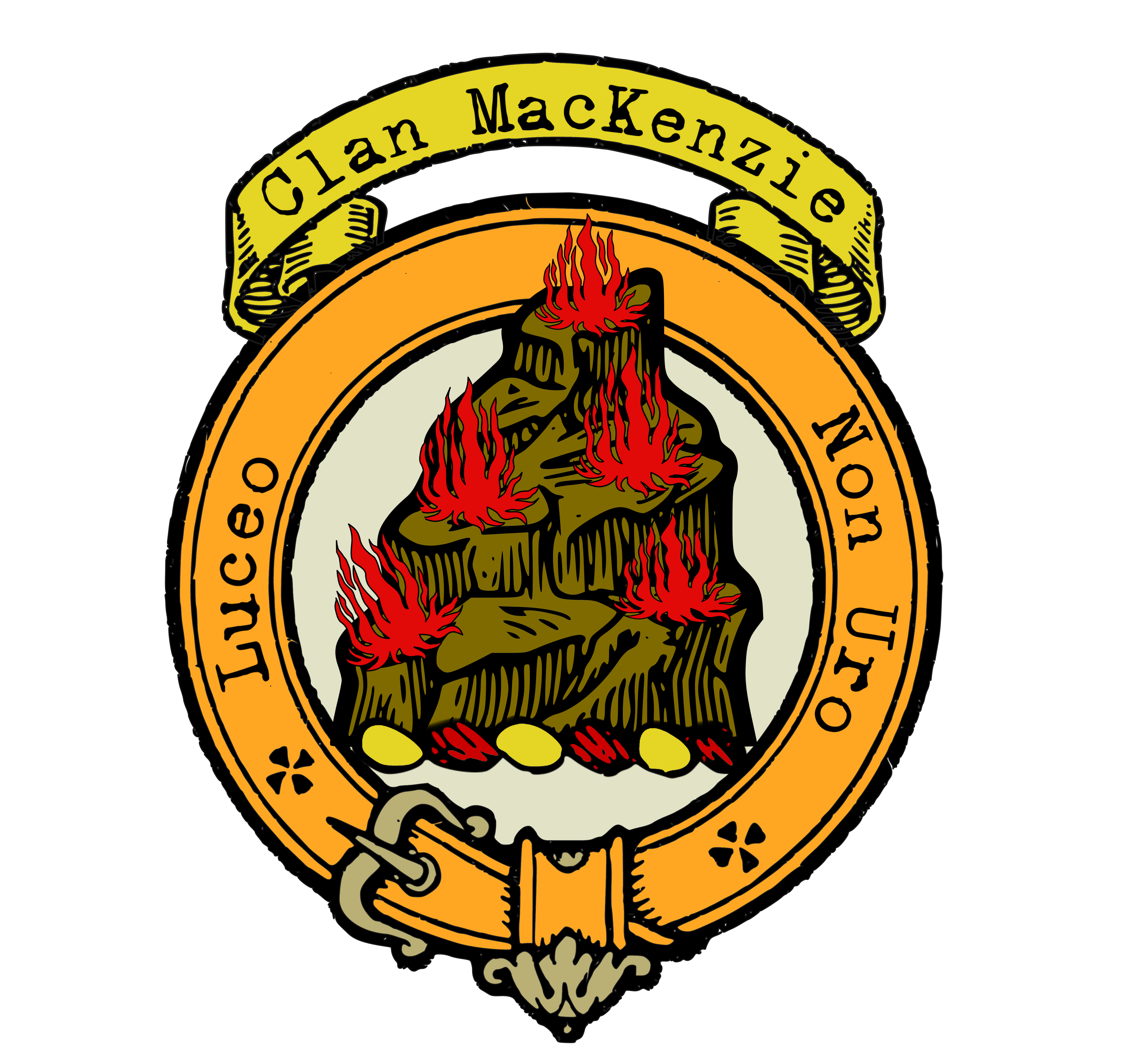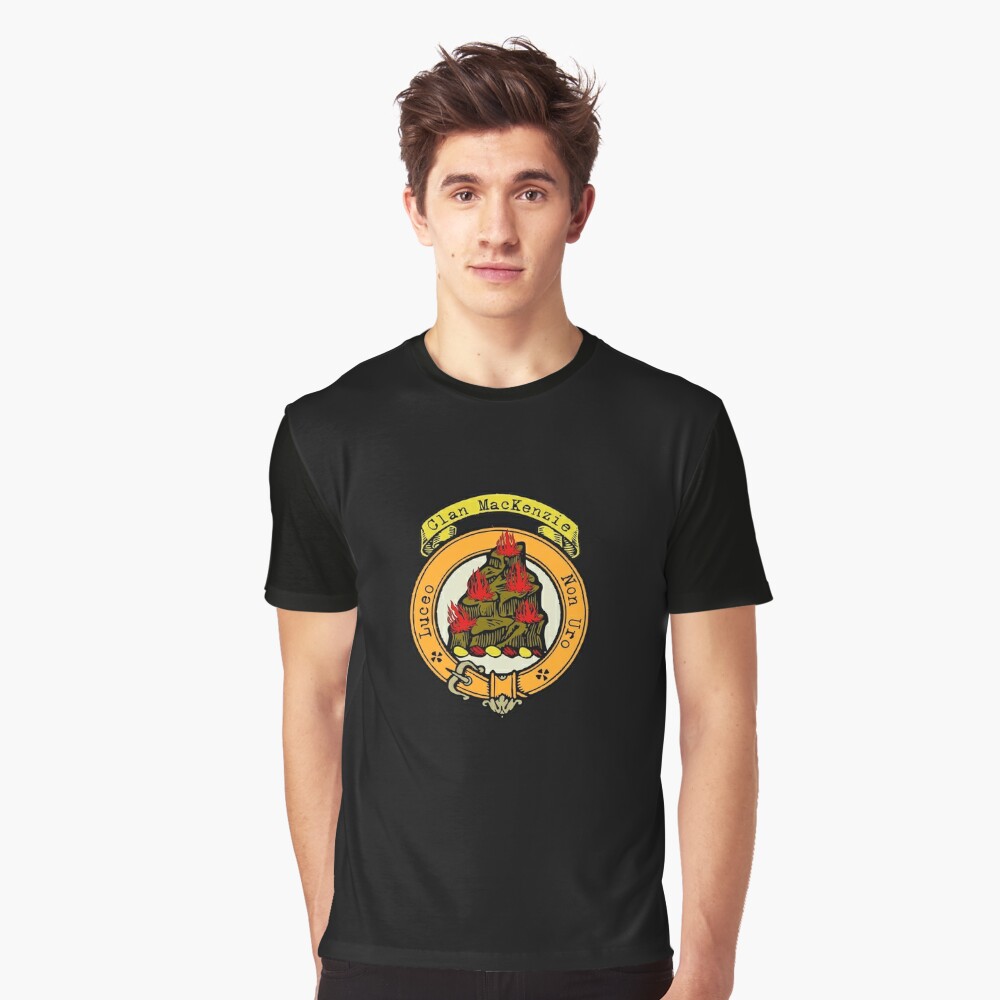Clan MacKenzie
|
|
CREST: A mount in flames Proper MOTTO: Luceo non uro TRANSLATION: I shine, not burn VARIATIONS: McKenzie |
 The roots of Clan Mackenzie trace back to the 12th century and the Celtic dynast Gilleoin of the Laird. Alongside Clan Matheson and Clan Anrias, the Mackenzies share a common ancestry, fostering a sense of kinship and unity among these noble families. Their surname, “Maccoinneach,” carries the symbolism of the pagan god Cerunnos, often depicted with a stag’s head or antlers. This connection may explain the presence of the gold stag’s head on the Mackenzie chief’s shield. The roots of Clan Mackenzie trace back to the 12th century and the Celtic dynast Gilleoin of the Laird. Alongside Clan Matheson and Clan Anrias, the Mackenzies share a common ancestry, fostering a sense of kinship and unity among these noble families. Their surname, “Maccoinneach,” carries the symbolism of the pagan god Cerunnos, often depicted with a stag’s head or antlers. This connection may explain the presence of the gold stag’s head on the Mackenzie chief’s shield.
By the 13th century, the Mackenzies had established themselves in the region between Aird on the east coast and Kintail on the west. They held extensive lands in Ross, strategically positioned between the Black Isle and the Outer Hebrides. Eilean Donan, their stronghold at the mouth of Loch Duich, became a symbol of their power and resilience. In 1463, the Mackenzie chief, Alexander Mackenzie of Kintail, secured royal charters to his lands, solidifying their authority. During the turbulent times of the 15th and 16th centuries, the Mackenzies found themselves entangled in political struggles and shifting alliances. The earldom of Ross was under the control of the Macdonald Lords of the Isles, yet the Mackenzie chief commanded a formidable force of two thousand warriors. Their loyalty to the Stewart monarchs, particularly demonstrated by Alasdair of Kintail’s support against the last Earl of Ross, saw their fortunes rise while the Macdonalds waned. The Mackenzies expanded their territory by acquiring the island of Lewis from the Macleod rulers and Lochalsh from the Macdonells. Eilean Donan Castle, their western stronghold, became a symbol of their authority, guarded by the loyal Macrae clan, who were known as “Mackenzie’s shirt of mail.” In recognition of their contributions, the Mackenzie chief was elevated to the peerage as Lord Mackenzie of Kintail in 1609, followed by the creation of the Earl of Seaforth title. The Mackenzies embraced the reformed church and were staunch supporters of the National Covenant in 1638, emphasizing their religious devotion and commitment to their beliefs. However, their participation in the rising of 1715 led to the temporary forfeiture of titles for the fifth Earl. Nevertheless, the Mackenzies remained resilient, with subsequent generations regaining their positions and demonstrating unwavering loyalty. The Mackenzie clan’s enduring legacy is a testament to their strength, determination, and enduring presence in Scottish history. Throughout the 19th century, the chiefship of the clan was a subject of dispute until the present Earl of Cromartie’s father was officially recognized as the chief by the Lord Lyon in 1980, cementing their place as custodians of the Mackenzie heritage. |
|
Citations:
|
|


